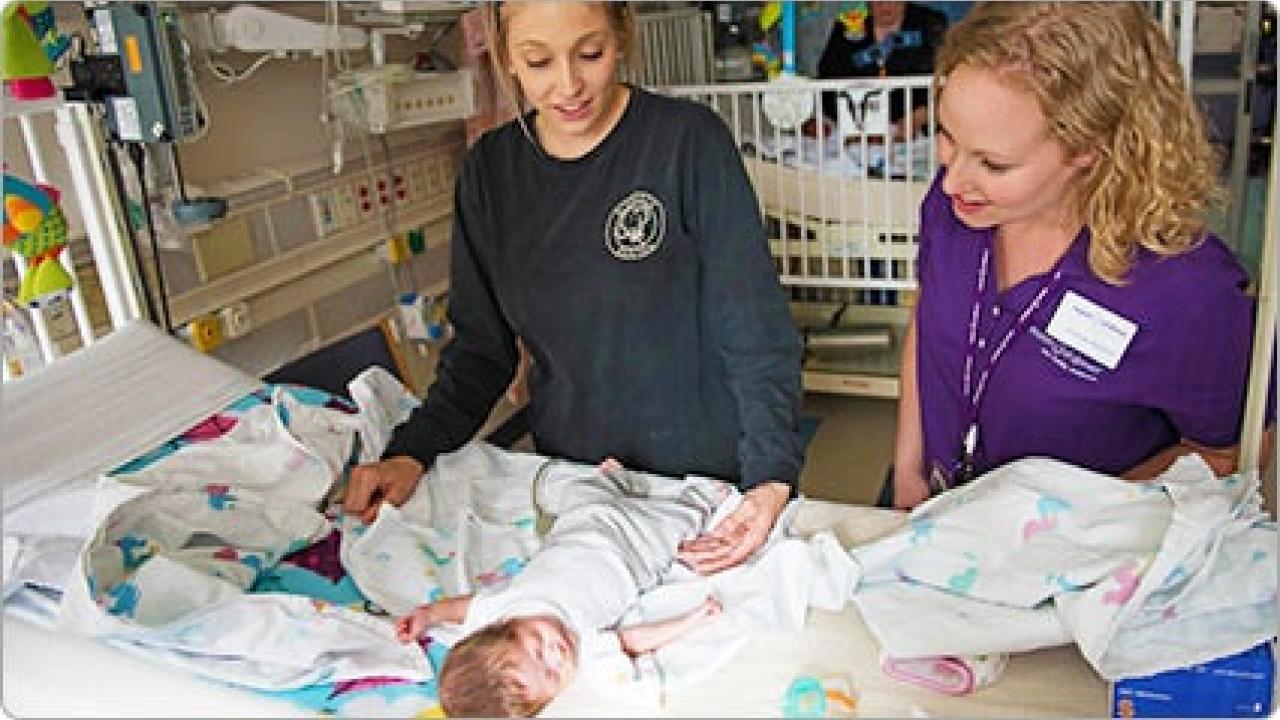Key Points
Your baby gives you cues (signals) about how they feel and what they need.
Learn what your baby’s cues mean and how to respond to them.
Interact with your baby when they're ready and give them a break when they need one
What are your baby’s cues and how do they help you know what he needs?
Cues are signals from your baby that tell you how he feels and what he needs. Some cues tell you that your baby is ready to interact (be active with you). Other cues tell you that your baby needs a break or to rest. To figure out what the cues mean, look at what your baby is doing and what’s happening around him. Once you’ve learned to read your baby’s cues, you can better respond to his needs.
What cues tell you that your baby wants to interact?
These cues show that your baby is ready to interact:
- She’s awake and alert.
- She brings her hands or feet together, or she stays in a softly tucked position with her arms and legs tucked up into the middle of her body.
- She grabs at someone’s finger or an object.
- She puts her hand on her ear, the side of her face or near her mouth.
- She moves smoothly (not jumpy or startled).
- Her eyes are open wide, and they try to follow a moving face or object.
Here are some ways to interact with your baby when she’s ready:
- Hold her.
- Talk to her, read her a story or sing a song to her.
- Give her a bath.
- Change her diaper.
- Feed her.
What cues tell you that your baby needs a break from activity?
These cues show that your baby needs to take a break:
- He feels stiff like he’s tense or limp like he’s really tired.
- He stretches out his arms and spreads his fingers wide apart. When he does this with his fingers, it’s called splaying.
- He squirms, startles or twitches more than usual. He won’t make eye contact, and he turns his head away.
- He arches his back, makes a fist or pushes his hand out like he’s telling you to stop.
- His skin gets pale.
- He frowns or is fussing and crying.
- Spits up or chokes
Here are some things you can do when your baby needs a break:
- Hold him. You may want to use a containment hold. This is when you gently hold your baby’s head and her tummy, bottom or feet. Ask the nurse to show you how.
- Talk softly to him.
- Place your hand lightly on his tummy or chest, or let him hold your finger.
- Swaddle him snugly, but not too tight. Swaddle means you wrap your baby in a thin blanket so that it covers most of his body below the neck.
- If he uses a pacifier, give him one.
- Put a rolled blanket or diaper near his feet so he can press against it.
Sometimes doing these things may be too much for your baby. If none of these work, put him in his bed in a quiet place with dim lights. If you can’t dim the lights, shade your baby’s eyes with your hand.
See also: Share your story
Last reviewed: April, 2017

